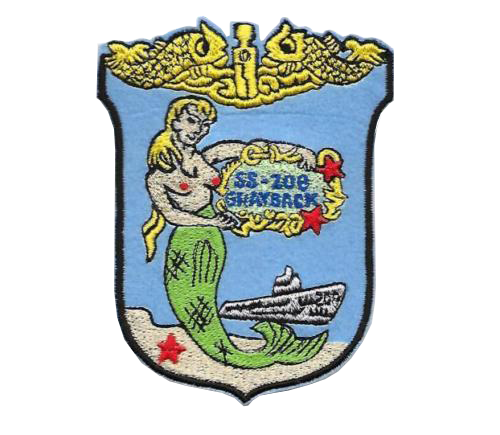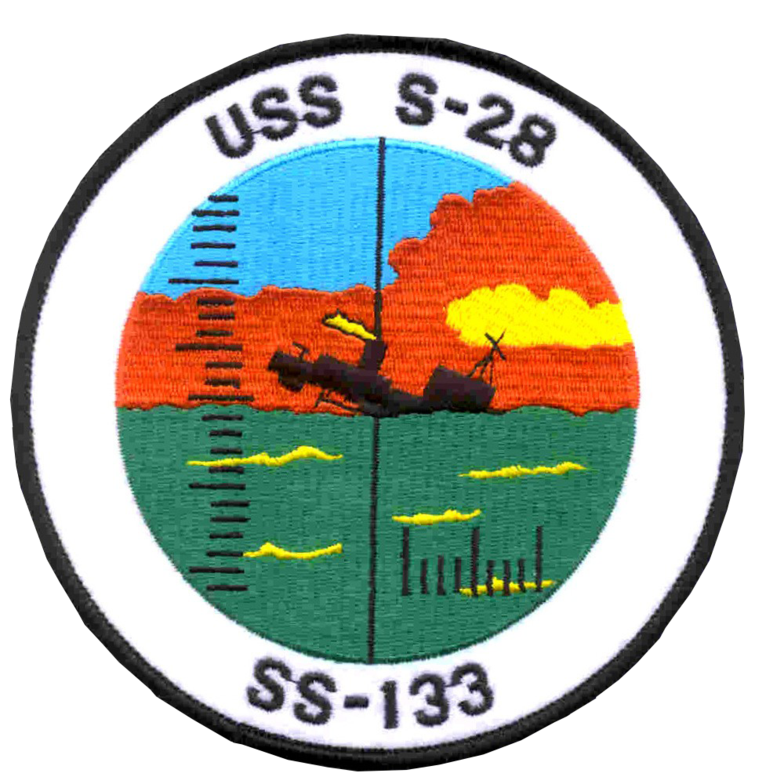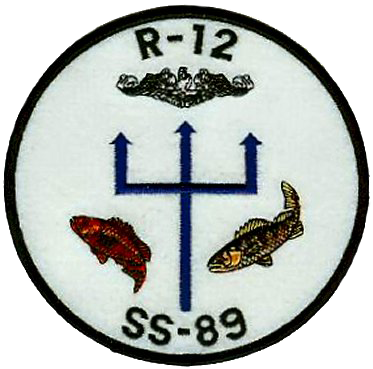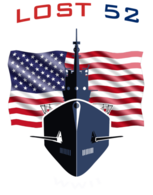a 501(c)3 Ocean Outreach Project
Honoring the men their memory and their mission
USS Grayback (SS-208), a Tambor-class submarine, was the first ship of the United States Navy to be named for the lake herring. Her keel was laid down by the Electric Boat Company in Groton, Connecticut. She was launched on the 31st of January 1941 sponsored by Mrs. Wilson Brown, wife of Rear Admiral Wilson Brown, Superintendent of the United States Naval Academy, and commissioned on the 30th of June 1941 with Lieutenant Willard A. Saunders in command.
Attached to the Atlantic Fleet Grayback conducted her shakedown cruise in Long Island Sound out of Newport, New London, and New York City. In company with Grampus (SS-207) she departed New London, Connecticut, on September 8th for patrol duty in the Caribbean Sea and Chesapeake Bay; then arrived Portsmouth, New Hampshire, on the 30th of November for overhaul. With the United States entry into the war, Grayback sailed for Pearl Harbor, arriving February 8th,1942.
World War II- Service history
First patrol
Grayback's first war patrol from the 15th of February to the 10th of April took her along the coast of Saipan and Guam. There she had a four-day encounter with an enemy submarine; the enemy U-boat fired two torpedoes at Grayback on the morning of the 22nd of February, then continued to trail her across the Pacific. Grayback spotted the enemy conning tower a couple of times, and the Japanese ship broached once; but the Grayback could not get into position to attack. After four days, Grayback shook the other sub and continued on patrol. On March 17th she sank her first ship, a 3291-ton cargo ship off Port Lloyd.
Second Patrol
Her second war patrol met with a dearth of targets although she even took the unusual and risky measure of patrolling surfaced during the day. On 22nd of June she arrived at Fremantle, Australia, which was to remain her home base for most of the war. On her third and fourth war patrols, in the South China Sea and St. George's Passage, Grayback was hampered by bright moonlight, shallow and treacherous water, and enemy patrol craft. Despite these hazards, she damaged several freighters and an enemy submarine. However, the very presence of Grayback and her sister ships in these waters—the threat they presented to shipping and the number of enemy escorts they tied up—was an important factor in the successful conclusion of the Guadalcanal campaign, America's first offensive campaign in the Pacific war.
Fifth patrol
The fifth war patrol began as Grayback sailed from Australia on December 7th, 1942. Only a week out of port, Pharmacist's Mate Harry B. Roby was called upon to perform an emergency appendectomy, the second to be done on a patrolling submarine. With Grayback running a hundred feet beneath the surface, the untutored Roby successfully removed the infected appendix, and his patient was back standing watch by the end of the patrol. Then, on the 25th of December, Grayback surfaced to sink four landing barges with her deck guns. Four days later she was again fired on by an enemy submarine but maneuvered to avoid the torpedoes. On 3 January 1943 sank I-18, one of 25 Japanese submarines destroyed by western submarines during the war.
On the 5th of January Grayback served as beacon ship for the bombardment of Munda Bay and also engaged in rescue work. Lying off Munda early in the morning of 5th, she received word that six survivors of a crashed B-26 Marauder bomber were holed up on the island. Grayback sent ashore two men, then submerged at dawn to avoid enemy aircraft. The submariners located the downed aviators, three of whom were injured, and hid out with them in the jungle. As night fell, Grayback surfaced offshore and by coded light signals directed the small boat "home safe" with the rescued aviators. For this action skipper Edward C. Stephan received the Navy Cross as well as a Silver Star from the US Army. Grayback continued on patrol, torpedoing and damaging several Japanese ships. On the 17th of January she attacked a destroyer escorting a large maru, hoping to disable the escort and then sink the freighter with her deck guns. However, the destroyer evaded the torpedoes and dropped 19 depth charges on Grayback. One blew a gasket on a manhole cover, and the submarine, leaking seriously, was ordered back to Brisbane where she arrived the 23rd of January.
Sixth patrol
Sixth Patrol
On her sixth war patrol from the16 the of February to 4th of April 1943, Grayback again had a run of bad luck and from the Bismarck Islands-Solomon Islands area without any military success. Her newly installed SJ radar had failed to function; and although she had taken several shots at marus, none were sunk.
Seventh Patrol
The seventh patrol was more successful. Departing Brisbane on the 25th of April, Grayback intercepted a convoy whose position had been radioed to her by Albacore (SS-218) on the 11th of May. In a night surface attack Grayback fired a spread of six torpedoes at the seven freighters and their three escorts. The three escorts charged, and she had to go deep to elude the attacking enemy. She was credited with the sinking of cargo ship Yodogawa Maru. On May 16th she torpedoed and seriously damaged a destroyer. The following day Grayback intercepted four marus with one escort and sank freighter England Maru and damaged two others before she was forced to dive. She arrived Pearl Harbor on May 30th, then proceeded to San Francisco, California, for a much-needed overhaul and modernization.
Eighth Patrol
Arriving Pearl Harbor on the 12th of September 1943, Grayback prepared for her eighth war patrol, now under the command of John Anderson Moore. Sailing September 26th with Shad (SS-235), she rendezvoused with Cero (SS-225) at Midway Island to form the first of the Submarine Force's highly successful wolfpacks. The three submarines under Captain "Swede" Momsen in Cero, cruised the China Sea and returned to base with claims of 38,000 tons sunk and 3300 damaged. Grayback accounted for two ships, a passenger-cargo vessel torpedoed October 14th and a former light cruiser, Awata Maru, torpedoed after an end-around run on a fast convoy 22 October. Wolf pack tactics came into play on the 2nd of October as Grayback closed a convoy already attacked by Shad and sunk a 9000-ton transport listing from two of Shad's torpedoes. The submarines had now expended all torpedoes, and on November 10th they returned to Midway.
Grayback CO, John Anderson Moore was awarded after this mission a Navy Cross (see Bureau of Naval Personnel Information Bulletin No. 329 (August 1944)
Ninth patrol
With almost a quarter of her crew untested in battle Grayback departed Pearl Harbor for the East China Sea on December 2nd for her ninth war patrol. Within five days of her first contact with Japanese ships, she had expended all her torpedoes in a series of attacks which netted four ships for a total of over 10,000 tons. On the night of the 18th to 19th December Grayback attacked convoy of four freighters and three escorts. She sent freighter Gyokurei Maru and escort Numakaze to the bottom and damaged several others in surface attack. Two nights later, on the 20th to 21st of December, she spotted another convoy of six ships; and, after an end-around run she fired a spread of nine torpedoes into the heart of the Japanese formation. This first attack sunk one freighter and damaged another before Grayback dived to elude depth charges. Three hours later she surfaced and sank a second freighter. After an unsuccessful attack the following night had exhausted her torpedo supply, Grayback headed home. The submarine surfaced on the 27th of December and sank a good-sized fishing boat with deck guns before reaching Pearl Harbor on 4 January 1944. Grayback's CO, John Anderson Moore was awarded after this mission by second Navy Cross (see Bureau of Naval Personnel Information Bulletin No. 330 (September 1944)).
Tenth Patrol
Grayback's tenth patrol, her most successful in terms of tonnage sunk, was also to be her last. She sailed from Pearl Harbor on the 28th of January 1944, for the East China Sea. On February 24th the Grayback radioed that she had sunk two cargo ships on the 19th February and had damaged two others (Taikei Maru and Toshin Maru sunk). On the 25th of February she transmitted her second and final report. That morning she had sunk tanker Nanho Maru and severely damaged Asama Maru. With only two torpedoes remaining, she was ordered home from patrol. Due to reach Midway on the 7th of March, Grayback did not arrive. On March 30th ComSubPac listed her as missing and presumed lost with all hands.
From captured Japanese records the submarine's last few days can be pieced together. Heading home through the East China Sea after attacking convoy Hi-40 on 24 February, Grayback used her last two torpedoes to sink the freighter Ceylon Maru on the 27th of February. That same day, a Japanese carrier-based plane spotted a submarine on the surface in the East China Sea and attacked. According to Japanese reports the submarine "exploded and sank immediately," but antisubmarine craft were called in to depth-charge the area, clearly marked by a trail of air bubbles, until at last a heavy oil slick swelled to the surface. Grayback had ended her last patrol, one which cost the enemy some 21,594 tons of shipping.
Grayback CO, John Anderson Moore was posthumously awarded after this mission by third Navy Cross (see Bureau of Naval Personnel Information Bulletin No. 336 (March 1945))
Grayback ranked 20th among all submarines in total tonnage sunk with 63,835 tons and 24th in number of ships sunk with 14. The submarine and crew had received two Navy Unit Commendations for their seventh, eighth, ninth, and tenth war patrols.
Grayback received eight battle stars for World War II service.
Date Lost: 26 February 1944
Last Known Position: 25° 47'N, 128° 45'E
Current Position: Classified
Discovered June 5, 2019
Vessel Specifications
- Class and type:
 Tambor class diesel-electric submarine
Tambor class diesel-electric submarine
- Displacement:
 1,475 long tons (1,499 t) standard, surfaced
1,475 long tons (1,499 t) standard, surfaced
- 2,370 long tons (2,410 t) submerged
- Length:
 307 ft 2 in (93.62 m)
307 ft 2 in (93.62 m)
- Beam:
 27 ft 3 in (8.31 m)
27 ft 3 in (8.31 m)
- Draft:
 14 ft 7 1⁄2 in (4.458 m)
14 ft 7 1⁄2 in (4.458 m)
- Propulsion:
 4 × General Motors Model 16-248 V16diesel engines driving electrical generators
4 × General Motors Model 16-248 V16diesel engines driving electrical generators
- 2 × 126-cell Sargo batteries
- 4 × high-speed General Electric electric motors with reduction gears
- two propellers
- 5,400 shp (4.0 MW) surfaced
- 2,740 shp (2.0 MW) submerged
- Speed:
 20.4 knots (38 km/h) surfaced
20.4 knots (38 km/h) surfaced
- 8.75 knots (16 km/h) submerged
- Range:
 11,000 nautical miles (20,000 km) at 10 knots (19 km/h)
11,000 nautical miles (20,000 km) at 10 knots (19 km/h)
- Endurance:
 48 hours at 2 knots (3.7 km/h) submerged
48 hours at 2 knots (3.7 km/h) submerged
- Test depth:
 250 ft (76 m)
250 ft (76 m)
- Complement:
 6 officers, 54 enlisted
6 officers, 54 enlisted
- Armament:
 10 × 21-inch (533 mm) torpedo tubes
10 × 21-inch (533 mm) torpedo tubes
6 forward, 4 aft
24 torpedoes
1 × 3-inch (76 mm) / 50 caliber deck gun
Bofors 40 mm and Oerlikon 20mm cannon
To memorialize the 52 Lost WWII vessels and the brave crews, each state was assigned a Submarine Memorial for one of the boats. Indiana’s submarine is the Grayback.
USS Grayback SS-208














